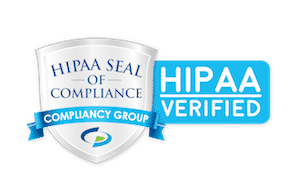The top drug safety agencies in the U.S. and Europe have raised concerns about the risks associated with codeine in children’s cold-and-cough medicine.
This month, the U.S. Food and Drug Administration (FDA) announced it is investigating the safety of codeine-containing cold-and-cough medicine for children younger than 18 due to the risk of potentially serious side effects. These can include slowed or labored breathing and can sometimes require hospitalization.
“We are evaluating all available information and will also consult with external experts by convening an advisory committee to discuss these safety issues,” FDA officials announced July 1. “We will communicate our final conclusions when our review is complete.”
The FDA’s counterpart across the Atlantic, the European Medicines Agency (EMA), has taken these concerns one step further. In April, EMA officials forbad the use of codeine to treat cold and cough in children younger than 12. The agency also recommended against codeine’s use in young people between 12 and 18 who have breathing problems, as the drug could make things worse.
The EMA rules also forbid using codeine for people of any age who are known to be CYP2D6 ultrarapid metabolizers. Codeine needs to be converted into morphine by the CYP2D6 enzyme to have its intended effect. This means individuals with an increased CYP2D6 metabolizing capacity can churn out potentially dangerous levels of morphine.
“Patients of all ages who are known to be ‘ultra-rapid metabolisers’ [sic], which means that they convert codeine into morphine very rapidly, must not use codeine for cough and cold as they are more at risk of serious side effects with codeine,” the EMA’s April announcement said.
Both the European Union and the U.S. already have restrictions in place regarding the use of codeine for child pain relief. In 2013, for example, the FDA added a boxed warning to codeine-containing pain medications saying they should not be used to treat post-operative pain after tonsillectomies and/or adenoidectomies.
“Deaths have occurred post-operatively in children with obstructive sleep apnea who received codeine for pain relief following a tonsillectomy and/or adenoidectomy,” the FDA said then.
Though codeine use for children in American ERs dropped between 2000 and 2010, between 558,000 and 876,000 children are still getting prescriptions for the drug each year in the U.S. Other reports cite codeine as the second-most widely used opioid drug in medical practice worldwide and the most commonly prescribed opioid to children in Europe.
Both the FDA and EMA warn that any of the following symptoms in children after they’re given codeine warrant immediate medical attention:
- Slow or shallow breathing
- Confusion
- Sleepiness
- Small pupils
- Feeling sick
- Constipation or lack of appetite
The FDA will convene a public hearing on potential risk of codeine-containing cold-and-cough medicines and post announcements on the Federal Register and Advisory Committees web pages. The agency urges healthcare professionals, parents and caregivers to report potential codeine side effects to the FDA’s MedWatch program.

